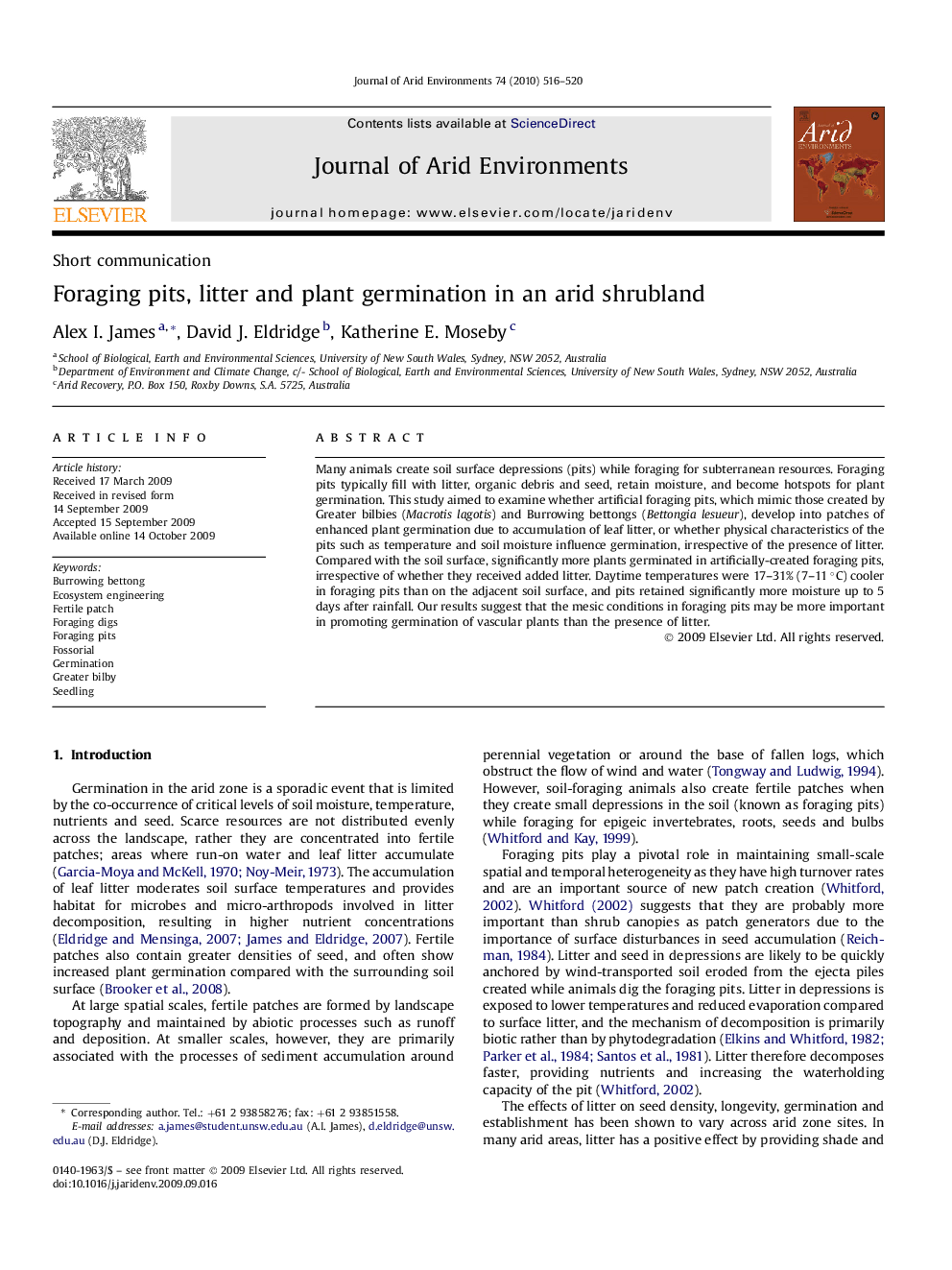| Article ID | Journal | Published Year | Pages | File Type |
|---|---|---|---|---|
| 4394295 | Journal of Arid Environments | 2010 | 5 Pages |
Many animals create soil surface depressions (pits) while foraging for subterranean resources. Foraging pits typically fill with litter, organic debris and seed, retain moisture, and become hotspots for plant germination. This study aimed to examine whether artificial foraging pits, which mimic those created by Greater bilbies (Macrotis lagotis) and Burrowing bettongs (Bettongia lesueur), develop into patches of enhanced plant germination due to accumulation of leaf litter, or whether physical characteristics of the pits such as temperature and soil moisture influence germination, irrespective of the presence of litter. Compared with the soil surface, significantly more plants germinated in artificially-created foraging pits, irrespective of whether they received added litter. Daytime temperatures were 17–31% (7–11 °C) cooler in foraging pits than on the adjacent soil surface, and pits retained significantly more moisture up to 5 days after rainfall. Our results suggest that the mesic conditions in foraging pits may be more important in promoting germination of vascular plants than the presence of litter.
